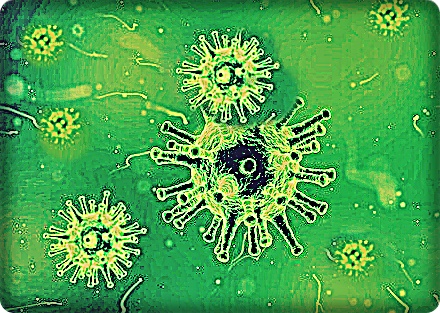Nipah Virus is an emergent infectious disease that has its roots in Malaysia and Singapore in 1998 and 1999. The first few cases were reported in domestic pigs and other species of domestic animals like goats, sheep, dogs, and horses. In 2001, NiV was singled out as an instrumental agent in an outbreak of human disease occurring in Bangladesh
The organism which causes Nipah Virus encephalitis is an RNA or Ribonucleic acid virus of the family Paramyxoviridae, genus Henipavirus; this is closely related to Hendra virus.
Nipah virus infection gets its name from a village in Malaysia where the person from whom the virus was first isolated, died due to the disease.
Symptoms of Nipah Virus
The infection is associated with inflammation of the brain or encephalitis.
After an individual gets exposed to the virus there is an incubation period of 5 to 14 days, following which the illness sets in the form of 4 to 14 days of fever, headache, disorientation, drowsiness, stomach pain, fatigue, vomiting and mental confusion.
Respiratory illness and breathing problems, a well as neurological and pulmonary signs are also evident in the early part of the infection
The symptoms can complicate to coma within 24 to 48 hours.
Risk factors
In Malaysia and Singapore, the Nipah virus infection was linked to contact with Nipah virus-infected pigs.
Nipah virus infection is more common in Bangladesh and Indian, where exposure has been associated with ingesting raw date palm sap and contact with bats. When it comes to human-to-human transmission, exposure to other Nipah virus-infected individuals is a risk factor.
Specifically speaking, the disease spreads through fruit bats or ‘flying foxes,’ of the genus Pteropus, who are known to be the natural reservoir hosts of the Nipah and Hendra viruses. The virus is present in bat urine and potentially, bat excreta, saliva, and birthing fluids. Reports state the first incidence of Nipah virus infection happened when pigs in Malaysian farms came in contact with the bats who had lost their habitation due to deforestation. Furthermore, transmission can also happen due to the virus spreading through clothing, boots, equipment, and vehicles.
Nipah Virus was known to affect humans in Malaysia and Singapore after directly coming into contact with the excretions or secretions of infected pigs. Reports from outbreaks in Bangladesh suggest transmission from bats in the process of climbing trees coated with bat excrement or drinking raw palm sap tainted with bat fluids and excretions.
In Bangladesh and India, there have been incidents of possible human-to-human transmission of the disease.
In Kerala (in May 2018) there were 9 reported death cases of virus-induced fever in North Kerala. This is the first time, the virus was detected in the state.
Diagnosis
A combination of tests is used to diagnose Nipah virus-related illness. Real-time polymerase chain reaction (RT-PCR) from nasal and throat swabs, cerebrospinal fluid, urine, and blood SRE conducted in the early stages of the disease. Later on, antibody detection by ELISA (IgG and IgM) can be used. For deaths, immunohistochemistry on tissues collected during the autopsy is the only determining way for diagnosis.
Nipah Virus – Treatment
Since person to person spread is imminent, the treatment weighs on supportive care, regular infection control practices and adequate nursing procedures to avoid hospital-acquired infections.
Supportive care is an integral part of treatment. Since Nipah virus encephalitis can spread from person to person, it is important to employ adequate barrier nursing techniques and standard infection control methodologies to avoid nosocomial transmission or hospital-acquired infections.
A drug called ribavirin is indicated to be effective against virus in-vitro but there is still research going on for drugs with adequate efficacy.
Prevention
The things that can be used to done to prevent Nipah virus is preventing exposure to bats and sick pigs in endemic areas and avoiding consuming raw date palm sap. Precautions are also needed at the hospital when it comes to handling laboratory sample, infected patients, and disinfecting slaughterhouses.
Ensure that the food is not contaminated by bats fluids, secretions or excretions. Do not consume fruits that have been nibbled by bats.
Do not drink toddy brewed in open containers in close proximity to palm trees.
If you come in contact with someone who has Nipah virus, maintain adequate sanitization. Wash and clean your hands thoroughly. Also, clothes, utensils, and items used for bath and toilets should be cleaned separately

Official Platform Uniswap Free Gateway go free $400! Click Here: https://telegra.ph/Official-Platform-Uniswap-Free-Gateway-11-30 ❤️